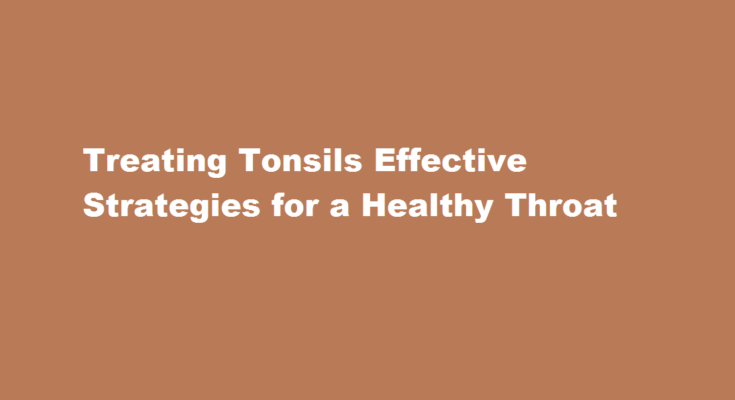Introduction
Tonsils, part of the body’s immune system, are two masses of tissue located at the back of the throat. While they play a crucial role in fighting infections, they can sometimes become inflamed or infected, leading to discomfort and health issues. In this article, we will explore various treatment options for tonsil-related conditions, ranging from self-care practices to medical interventions. By understanding these strategies, individuals can effectively manage tonsil-related problems and maintain a healthy throat.
Self-care practices for tonsil health
Before considering medical interventions, it is important to adopt self-care practices that can help alleviate tonsil discomfort. Gargling with warm saltwater multiple times a day can reduce inflammation and relieve pain. Drinking plenty of fluids keeps the throat hydrated and facilitates healing. Avoiding irritants such as smoking and air pollutants can prevent further irritation of the tonsils. Resting the voice and avoiding excessive strain on the throat can aid in recovery.
Medications for tonsil-related conditions
Certain medications can be prescribed to manage tonsil infections or inflammation. Antibiotics are commonly prescribed for bacterial tonsillitis, while antiviral medications may be used for viral infections. Over-the-counter pain relievers, such as ibuprofen or acetaminophen, can help reduce pain and fever. Nonsteroidal anti-inflammatory drugs (NSAIDs) can also alleviate inflammation. It is essential to consult a healthcare professional before taking any medications to ensure proper dosage and avoid potential side effects.
Surgical interventions for chronic tonsil problems
In cases of chronic tonsil issues, surgical intervention may be necessary. Tonsillectomy, the complete removal of the tonsils, is a common procedure performed when other treatments fail or when recurrent tonsillitis significantly affects the quality of life. Tonsillectomy is typically an outpatient procedure that requires a recovery period of 1-2 weeks.
Laser cryptolysis A minimally invasive approach
Laser cryptolysis is a newer treatment option that aims to reduce the depth and size of the tonsil crypts, where debris can accumulate and cause problems. This minimally invasive procedure uses laser technology to smooth the surface of the tonsils, promoting improved overall tonsil health. Laser cryptolysis offers the advantage of reduced pain and a quicker recovery time compared to traditional tonsillectomy.
Lifestyle modifications for tonsil health
Maintaining a healthy lifestyle can help prevent tonsil-related problems. Practicing good oral hygiene, such as regular brushing and flossing, can minimize bacterial buildup in the mouth. Avoiding close contact with individuals who have respiratory infections reduces the risk of contracting viruses or bacteria that can cause tonsillitis. Consuming a balanced diet rich in vitamins and minerals strengthens the immune system and promotes overall health, reducing the susceptibility to tonsil infections.
Frequently Asked Questions
What is the first line treatment for tonsils?
Streptococcus pyogenes is the most common cause of bacterial tonsillitis and, if antibiotic treatment is deemed to be appropriate, penicillins are generally the antibiotic of choice.
What are the don’ts of tonsillitis?
Junk food is often fried or dry, both of which should be avoided if you have tonsillitis. You must also avoid them as they may be too hard on the throat. Spicy foods must be avoided completely as they cause inflammation in the tonsils and can also irritate the ears.
Conclusion
While tonsil-related conditions can be bothersome, knowing how to effectively treat them is essential for maintaining a healthy throat. By adopting self-care practices, considering medications when necessary, and exploring surgical options or laser cryptolysis for chronic problems, individuals can find relief and prevent recurrent issues, promoting long-term tonsil health.
Read Also : Managing High Blood Pressure A Comprehensive Guide to Treatment



